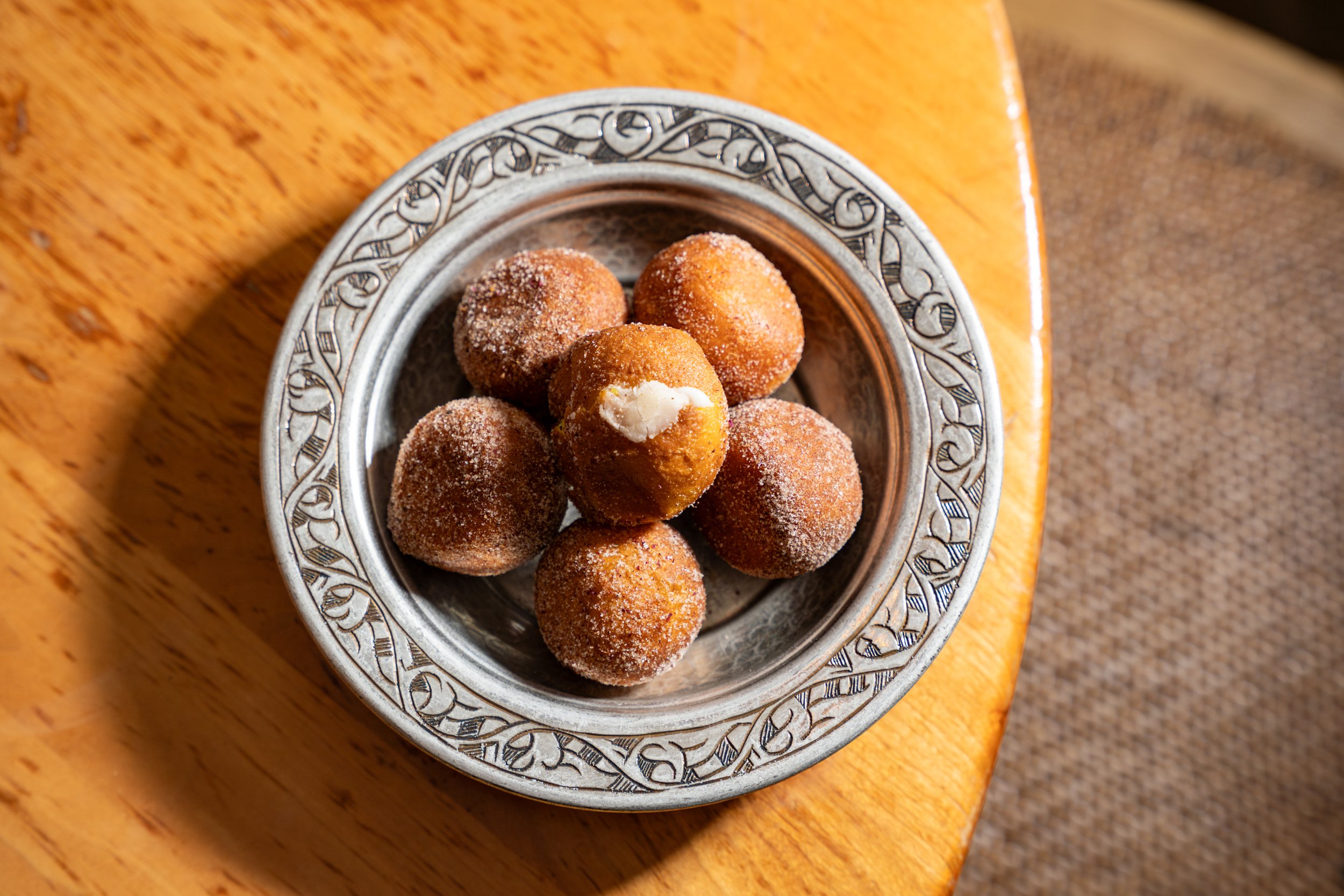Savoring Salep
Pastry chefs in Boston are utilizing orchid flour and harnessing its creamy texture and floral flavor in dynamic desserts.
illustration: rachel krohn
Like a cup of hot chocolate is to the Western world—alluring, comforting, and seasonal—salep is to the Eastern Mediterranean.
The beverage of hot milk blended with dehydrated and ground orchid bulb (an ingredient that goes by the same name) originated in Turkey and became beloved for its creamy consistency and light, floral flavor. In some areas, salep powder is referred to as “white gold” because of its expensive price point due to the reliance on mostly wild, foraged orchids. The orchid bulb flour acts as a thickening agent, and is also commonly used in Turkey and Greece in a viscous ice cream called dondurma or kaimaki, respectively. In Boston, pastry chefs are taking inspiration from salep’s unique characteristics to create textural and nuanced dishes.
At Cambridge’s Oleana, where Executive Chef Ana Sortun showcases Turkish and Middle Eastern cuisine, Pastry Chef Nik Mastalerz occasionally utilizes salep in sweet dishes. “I've used it in milk soaks for trilece (a cake similar to tres leches), and have made it the star of ice cream flavors,” he says. “I treat it like a stabilizer, or similar to cornstarch. The real stuff needs to be dispersed in something else that's dry (like sugar), much like how mastic needs to be mortar and pestled with sugar.” For a recent menu, Mastalerz whipped salep into an icing, and used it to fill turmeric-laced doughnuts coated in Persian-spiced sugar. “For the [icing], I heat salep in heavy cream with vanilla bean, honey, and salt before blending it into powdered sugar.” The doughnuts (inspired by Taco Bell’s Cinnabon Delights) ooze sticky icing that’s lightly sweet and aromatic.
Persian Sugar Doughnuts with Sahlap Icing at Oleana
Sachlav Cream Pie, Carrot Jam, Rose-Cardamom Pastry Cream, Tahini Cookie Crust, Toasted Coconut, Pistachios at MamaLeh's
When salep made its way to Israel, it became known as sachlav, and the drink was often flavored with spices like cinnamon or rose water. “When I first had it, it was with pistachio and pomegranate molasses beachside on a cold winter day,” says Pastry Chef Chelsea Kantor. For a fundraiser for the Jewish Arts Collaborative at Mamaleh’s Delicatessen, Kantor transformed sachlav into a cream pie. She layered a tahini cookie crust with carrot-pomegranate jam, pastry cream infused with rose water and cardamom, whipped cream, and a finish of toasted coconut, cinnamon, and pistachios—“all of the elements of a cup of sachlav, the flavor and feeling, but in pie.”
In recent years, as salep has gained popularity around the world, some manufacturers have made it more accessible by packaging it in pre-made mixes with additions like milk powder and spices. The popularization has also led to an unfortunate rise in the overharvesting of orchids in the Middle East, to the point where The Convention on International Trade in Endangered Species lists salep orchids as a protected plant. Sustainability in farming and foraging practices is key. Buyers should also be aware of imposter products diluted with other flours, flavorings, or thickening agents and those made from illegally harvested or distributed plants so that the cherished ingredient and historic beverage can continue to be celebrated.









